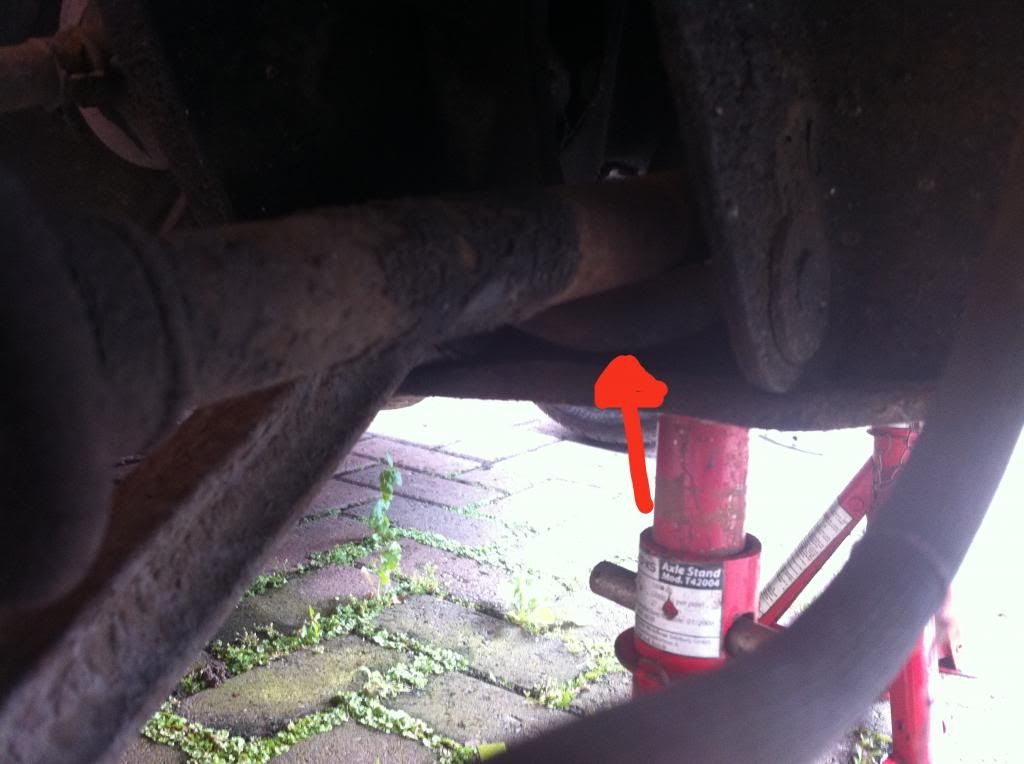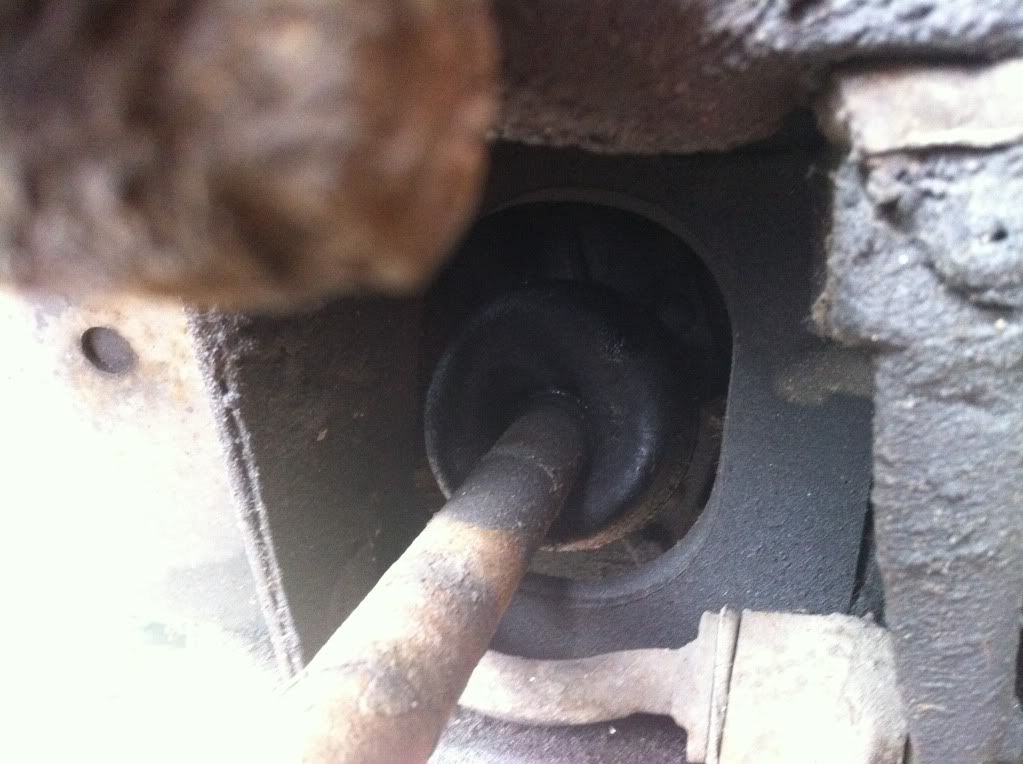This is potentially a very serious problem, because if the shaft pops out on the move at speed, it will flail around and do massive damage. It is likely to have been caused by a faulty circlip, or shaft not pushed in fully, but the fact that it could happen suggests that even if the circlip is ok, the innards of the pot joint will be able to disengage from the outer, which is every bit as dangerous. I would suggest that there is an excessive amount of lowering, and possibly far too much negative camber, if the lower arms are non-standard. Or, maybe the engine is not sitting in the correct place? (Faulty mounts is a possibility.) Or, of course, you have the wrong drive shafts fitted.
If you are just moving it around your yard, the shaft can be refitted easily. The way I would do it would be to undo the hub nut and drive the CV out with a soft hammer, thus forcing the inner end of the shaft into the pot. Once it is in, pull the CV back into place and re-torque the nut, following the appropriate procedure. Undoing one ball joint tends to not give sufficient free movement, and undoing two makes the shaft and hub assembly awkward to handle.
When you get the car sorted out and almost ready for the road, there are simple checks that you can do to see that it is safe. For instance, with cones removed so the suspension can be moved freely to its limits (use bump/rebound stops and dampers to define ends of travel, but remember to allow compression of the stops under dynamic load), raise the car on stands and jack the wheels up and down, one at a time, feeling through the gaiters to check that the inner cage of the pot joint is not approaching the end of the outer. While you are at it, lift the rubber dust covers and check that the ball joints are not nearing the end of their angular travel. Chect also, with the steering on full lock both ways, and suspension at both extremes, that the track rod ends are not running out of free travel. It is usually the ball joints that bottom out first and break suddenly, but I am not sure of how much margin exists in the track rod ends.
It is very important to do checks like this on any car which has had its suspension modified in a non-standard way. It may save lives. But if you have what seems to be a standard setup, it should be ok, unless wrong parts are fitted.

















